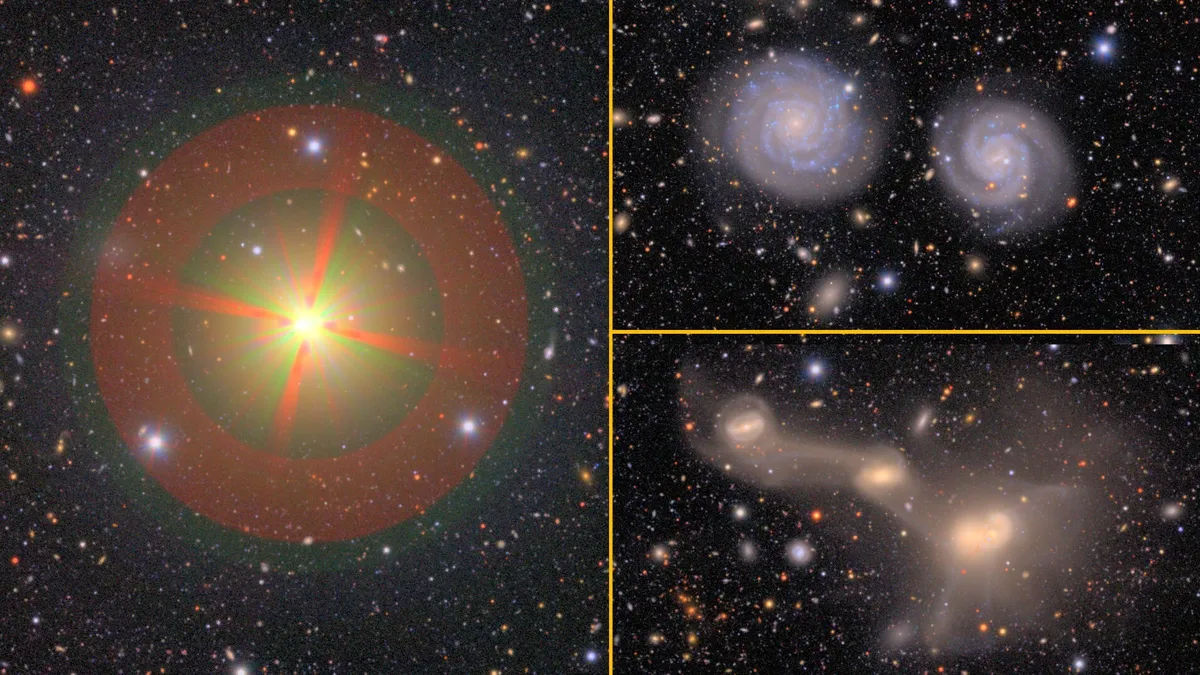
The long-awaited Vera C. Rubin Observatory has officially released its first batch of breathtaking images on June 23. This monumental achievement has captivated the global audience with one of the most detailed snapshots of the universe ever captured. Utilizing the world's largest digital camera, the Rubin Observatory is set to embark on a groundbreaking 10-year mission to create a time-lapse movie of the entire night sky.
During the telescope's impressive debut, the team unveiled a stunning image showcasing more than 10 million galaxies located in and around the Virgo Cluster. This glittering collection of galaxies is situated approximately 55 million light-years from Earth in the constellation Virgo. The complete image boasts an astounding 3,200-megapixel resolution, so detailed that it stretches beyond the comprehension of human eyes. According to project scientists at a recent news conference, the intricacies of this image are truly remarkable.
For those eager to explore, the Rubin Observatory team has provided a zoomable and searchable version of the image on their website. This interactive feature is filled with jaw-dropping close-ups of cosmic objects, each one a spectacular work of art. If you're interested in diving deeper into the universe, consider taking the observatory's free online tour of this cosmic treasure chest.
We explored the extensive image and highlighted some of the most stunning cosmic sights, complete with their coordinates for easy viewing. Here are some cosmic jewels from Rubin's debut image:
A Grand Design Spiral GalaxyCoordinates: 185.5, 4.5
One of the most striking features in the image is the grand design spiral galaxy known as Messier 61 (M61). This remarkable galaxy serves as a celestial mirror, offering astronomers a glimpse of what our own Milky Way might look like from an outside perspective. Positioned face-on, M61 showcases its well-defined spiral arms and a bright galactic core, which houses a supermassive black hole. First detected in 1779, M61 remains visible through a quality backyard telescope and can be found in the bottom center of Rubin's image.
Coordinates: 186.67, 9.0
In the upper-right corner of the image, three spiral galaxies are caught in a dramatic gravitational tug-of-war. As they draw nearer to one another, they are visibly stretched, with bridges of matter forming between them. Such cosmic collisions are common; scientists suggest that our Milky Way has merged at least a dozen times over the past 12 billion years.
Coordinates: 187.83, 7.58
While most objects in the Virgo Cluster are located far beyond our galaxy, the Rubin Observatory also captured a few nearby stars within the Milky Way. These stars are identifiable by their propeller-like diffraction spikes and reddish glow, appearing millions of times closer than the distant galaxies of the Virgo Cluster. The diffraction spikes are a result of light scattering within the telescope's optics, effectively distinguishing nearby stars from faraway celestial bodies.
Coordinates: 186.92, 8.83
The Virgo Cluster, the focal point of Rubin's debut image, is a gargantuan galaxy cluster bound together by gravity. It contains an estimated 2,000 galaxies orbiting each other in close proximity. By examining the image closely, we can see what a galaxy cluster looks like from afar. Each fuzzy orange splotch of light represents a galaxy filled with billions of stars, located billions of light-years from Earth.
Coordinates: 186.67, 8.83
Two spiral galaxies in Rubin's image appear to maintain a respectful distance from one another. This optical illusion creates the impression that they are side by side, while in reality, one galaxy (NGC 4411) is about 50 million light-years away, and its companion (NGC 4411b) is over 70 million light-years distant from Earth.
Coordinates: 185.93, 6.93
Throughout the image, long beams of bright light emerge from spherical halos, many of which are spiral galaxies. However, these galaxies are viewed edge-on, appearing as flattened, pancake-like disks cloaked in glowing dust. One such galaxy, NGC 4343, features an active galactic nucleus at its center, where a supermassive black hole is actively pulling in matter at near light speed.
What other cosmic wonders have you spotted in Rubin's incredible 3,200-megapixel image of the Virgo Cluster? We invite you to leave a comment below with coordinates to share your discoveries and join in on the exploration of this breathtaking cosmic masterpiece.